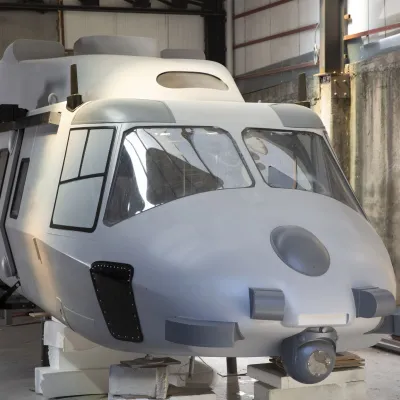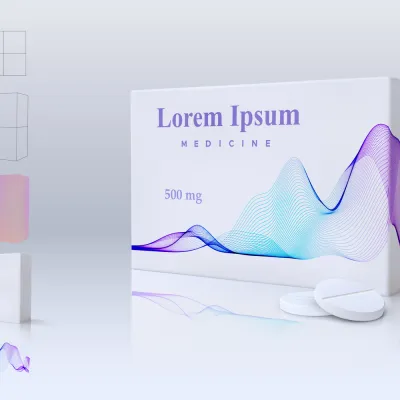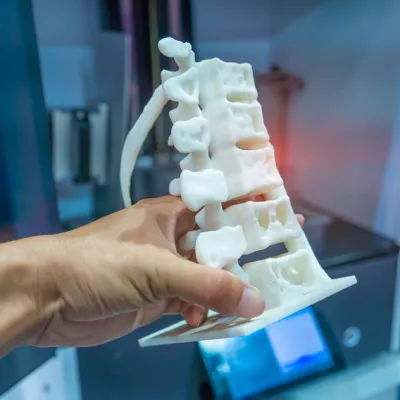- Konu Başlıkları
- The Future of 3D Printing in the Health Sector: Leading the Transformation of Medicine
- The Future of 3D Printing in the Health Sector
- Use of 3D Printers in Health Sector
- Prosthesis Production
- Surgery Planning and Models
- Implants and Orthopedic Devices
- Bioengineering and Tissue Engineering
- Personalized Medicines and Treatment Methods
- Medical Education and Simulations
- Rapid Prototype Production and Innovative Tools
- 3D Printing Technology in the Medical Field
- Medical 3D Printing: Personalized Solutions
- The Potential of 3D Printing in the Health Sector
- 3D Printing Will Revolutionize the Healthcare Sector!
The Future of 3D Printing in the Health Sector: Leading the Transformation of Medicine
3D printing technology has revolutionized many sectors in recent years, while the healthcare sector is also undergoing a major transformation by benefiting from this innovative technology. The future of 3D printing in the healthcare sector stands out as one of the most exciting developments shaping the future of medicine. So, what is the impact of 3D printing in the healthcare sector and what does this technology promise?
[widget-131]
The Future of 3D Printing in the Health Sector
The change that 3D printing technology will provide in the healthcare sector covers a wide range from patient treatment processes, surgery to prosthesis production. Today, research on the future of 3D printing in the healthcare sector shows that this technology has great potential. The medical world is entering a new era in which it can develop personalized treatment methods by producing solutions for individual patient needs.
Use of 3D Printers in Health Sector
The use of 3D printers in health sector is an extremely striking and promising development. Especially in the production of prostheses, 3D printers allow the production of perfectly compatible, more economical and personalized products. The use of 3D printers in the healthcare field paves the way for the personalization of medical devices, while offering patients a chance for faster recovery during their treatment processes. These printers can also create high-precision models for surgical planning and shape the future of 3D printing in the healthcare sector.

Prosthesis Production
One of the most important areas of use of 3D printers in the healthcare field is the production of prostheses. While traditional prosthesis production methods can be time-consuming and expensive, the use of 3D printers in health sector makes it possible to produce personalized, fully-adapted prostheses. This process both makes patients more comfortable and significantly reduces production costs. In particular, production with medical 3D printing increases the functionality of prostheses by offering customized designs for each patient.
Surgery Planning and Models
Another important area of use is surgical planning. Surgeons can plan their operations more accurately by creating models suitable for the body structure of patients with 3D printing technology in the medical field. This helps the surgeon to see in advance which areas to focus on and which methods will be most effective, especially in complex surgical procedures. Thanks to 3D printers, surgeons can model patients' organs or body structures and make more precise planning before the actual surgery.
Implants and Orthopedic Devices
Thanks to the use of 3D printers in the healthcare field, orthopedic devices and implants can be produced faster and more personalized. Implants produced with 3D printing perfectly adapt to the patient's anatomy, thus accelerating the healing process and reducing the risk of complications. The future of 3D printing in the healthcare sector promises great hopes, especially in the fields of dentistry and orthopedics. Thanks to this technology, personalized dental implants and orthopedic devices have been designed, and more comfortable and effective treatment methods have been developed.
Bioengineering and Tissue Engineering
One of the most exciting developments regarding the future of 3D printing in the healthcare sector is its applications in the field of bioengineering and tissue engineering. 3D printers are used for the production of biological tissues and organs. In this way, new cells and tissues can be printed to replace lost or damaged tissues. In the medical field, 3D printing technology paves the way for organ transplantation and biological tissue production, while significantly shortening the waiting times for organ transplants in the future.
Personalized Medicines and Treatment Methods
3D printers are not only limited to the production of devices and prostheses, but are also used in the field of pharmaceutical production. 3D printers allow the production of personalized medicines, which has an important place in the future of 3D printing in the healthcare sector. With this technology, customized medicines can be produced according to the needs of patients. Similarly, special dosages can be designed for the treatment process, thus ensuring that patients comply better with the treatment.
Medical Education and Simulations
Another important area of use of 3D printers in the healthcare field is medical education and simulations. The use of 3D printers in health sector has become an important tool in the education process of medical students and surgeons. Human organ and tissue models made with 3D printing offer students the opportunity to learn realistically. In addition, simulations made for surgeons provide a safer surgical experience by practicing before the operation. Thus, the future of 3D printing in the healthcare sector is progressing with even more promising promises.
Rapid Prototype Production and Innovative Tools
3D printers also play a critical role in the rapid production of prototypes of medical devices. This technology allows for the faster design and testing of innovative tools in the healthcare field. Devices produced with 3D printing technology in the healthcare sector offer the opportunity to try out at a lower cost during the prototype phase and thus help the rapid development of new technologies.

3D Printing Technology in the Medical Field
3D printing technology is being used in more and more areas in the medical field today. Especially in surgical operations, anatomy models made with 3D printing help surgeons plan the operation more accurately and effectively. Likewise, in medical device production, this technology allows designs to be quickly prototyped. Thanks to the use of 3d printers in healthcare, surgeons can produce implants that will fully adapt to patients' body structures faster and at lower costs. The future of 3D printing in the healthcare sector is taking shape day by day and is leading to more promising studies.
Medical 3D Printing: Personalized Solutions
Medical 3D printing provides a great advantage in producing special solutions for individual patient needs. Medical 3D printing allows the production of customized prostheses, orthopedic devices and implants in accordance with the body structure of patients. This allows medicine to become more personalized and helps patients achieve better results. Thus, the future of 3D printing in the healthcare sector is increasing day by day. Especially in challenging processes such as cancer treatment, medical 3D printing technology allows the development of treatment methods that will cause less damage to patients' bodies.
The Potential of 3D Printing in the Health Sector
The future of 3D printing in the healthcare sector is not limited to prosthesis production. This technology also has the potential to revolutionize bioengineering, tissue engineering, and even organ transplantation. Research shows that body tissues and even organs can be produced with 3D printing.
[widget-13]
3D Printing Will Revolutionize the Healthcare Sector!
In summary, the future of 3D printing in the healthcare sector looks quite bright. 3D printing is finding new applications in the medical field every day, and this technology makes healthcare more accessible, more personalized, and faster. With this developing technology, we will enter a period where treatment processes will be safer and more effective for patients. The potential offered by 3D printing in the healthcare sector will provide life-saving solutions on the one hand, and will create revolutionary changes in the production of medical products on the other.

















